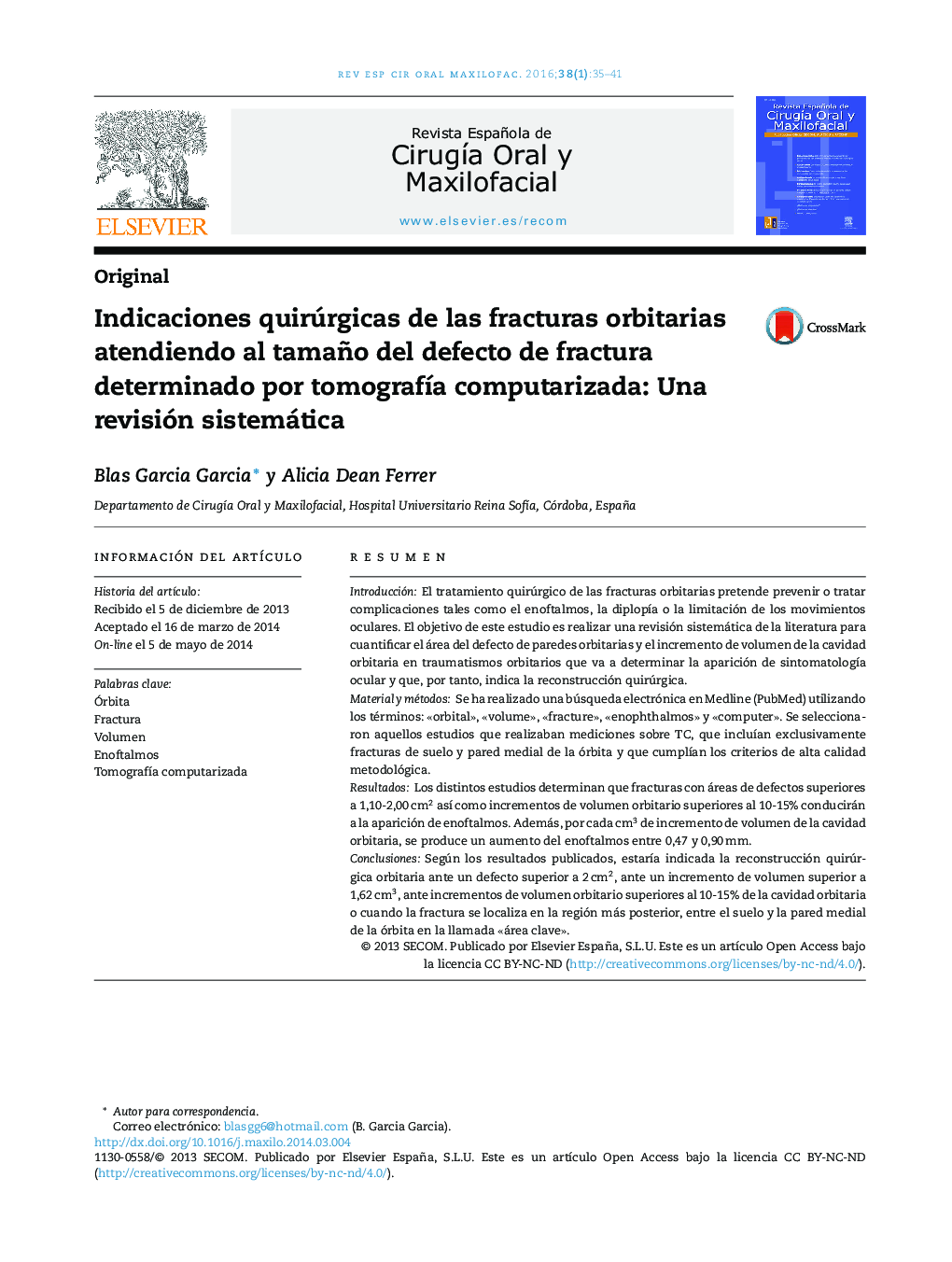| کد مقاله | کد نشریه | سال انتشار | مقاله انگلیسی | نسخه تمام متن |
|---|---|---|---|---|
| 3172944 | 1199981 | 2016 | 7 صفحه PDF | دانلود رایگان |
ResumenIntroducciónEl tratamiento quirúrgico de las fracturas orbitarias pretende prevenir o tratar complicaciones tales como el enoftalmos, la diplopía o la limitación de los movimientos oculares. El objetivo de este estudio es realizar una revisión sistemática de la literatura para cuantificar el área del defecto de paredes orbitarias y el incremento de volumen de la cavidad orbitaria en traumatismos orbitarios que va a determinar la aparición de sintomatología ocular y que, por tanto, indica la reconstrucción quirúrgica.Material y métodosSe ha realizado una búsqueda electrónica en Medline (PubMed) utilizando los términos: «orbital», «volume», «fracture», «enophthalmos» y «computer». Se seleccionaron aquellos estudios que realizaban mediciones sobre TC, que incluían exclusivamente fracturas de suelo y pared medial de la órbita y que cumplían los criterios de alta calidad metodológica.ResultadosLos distintos estudios determinan que fracturas con áreas de defectos superiores a 1,10-2,00 cm2 así como incrementos de volumen orbitario superiores al 10-15% conducirán a la aparición de enoftalmos. Además, por cada cm3 de incremento de volumen de la cavidad orbitaria, se produce un aumento del enoftalmos entre 0,47 y 0,90 mm.ConclusionesSegún los resultados publicados, estaría indicada la reconstrucción quirúrgica orbitaria ante un defecto superior a 2 cm2, ante un incremento de volumen superior a 1,62 cm3, ante incrementos de volumen orbitario superiores al 10-15% de la cavidad orbitaria o cuando la fractura se localiza en la región más posterior, entre el suelo y la pared medial de la órbita en la llamada «área clave».
IntroductionSurgical treatment of the orbital fractures is used in an attempt to prevent or treat complications, such as the enophthalmos, double vision, or limitations in ocular movements. The aim of this study is to carry out a systematic review of the literature in order to quantify the fault area in orbital walls. It also aims to increase the volume of the orbital cavity in the orbital traumatism that determines the appearance of ocular symptomatology and that, in turn, may require surgical reconstruction.Material and methodsAn electronic search was conducted in Medline (Pub-Med) using the terms: “orbital”, “volume”, “fracture”, “enophthalmos” and “computer”. Only these studies that relied on CT measurements, only included fractures of floor and medial wall of the orbit, and fulfilled the criteria for high methodological quality, were selected.ResultsVarious studies determine that fractures with areas greater than 1.10-2.00 cm2, as well as an increase in orbital volume, will lead to the appearance of enophthalmos in 10-15% of the cases. In addition, for every 1 cm3 increase in the volume of the orbital cavity, the enophthalmos increases between 0.47 mm and 0.90 mm.ConclusionsAccording to the published results, surgical orbital reconstruction is indicated for faults greater than 2 cm2, with a volume greater than 1.62 cm3, an orbital volume greater than 10-15% of the orbital cavity, or when the fracture is located in the innermost region, between the floor and medial wall of the orbit in the so called “key area”.
Journal: Revista Española de Cirugía Oral y Maxilofacial - Volume 38, Issue 1, January–March 2016, Pages 35–41
